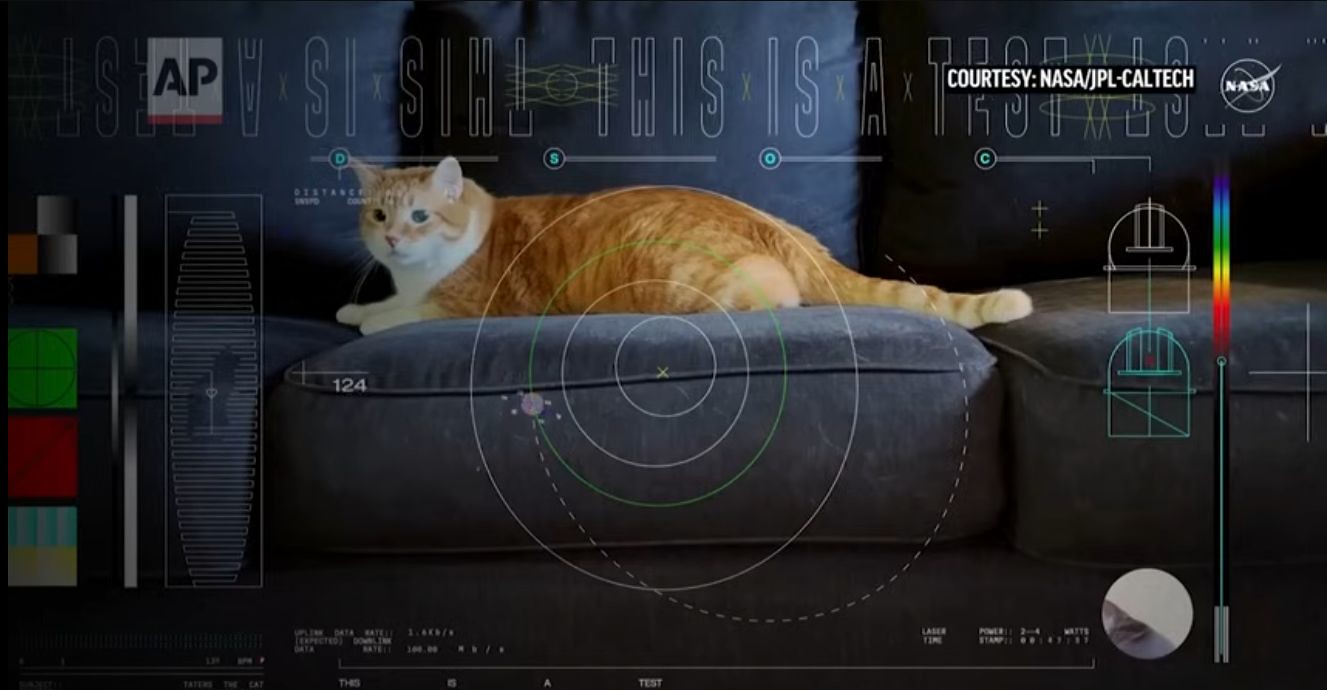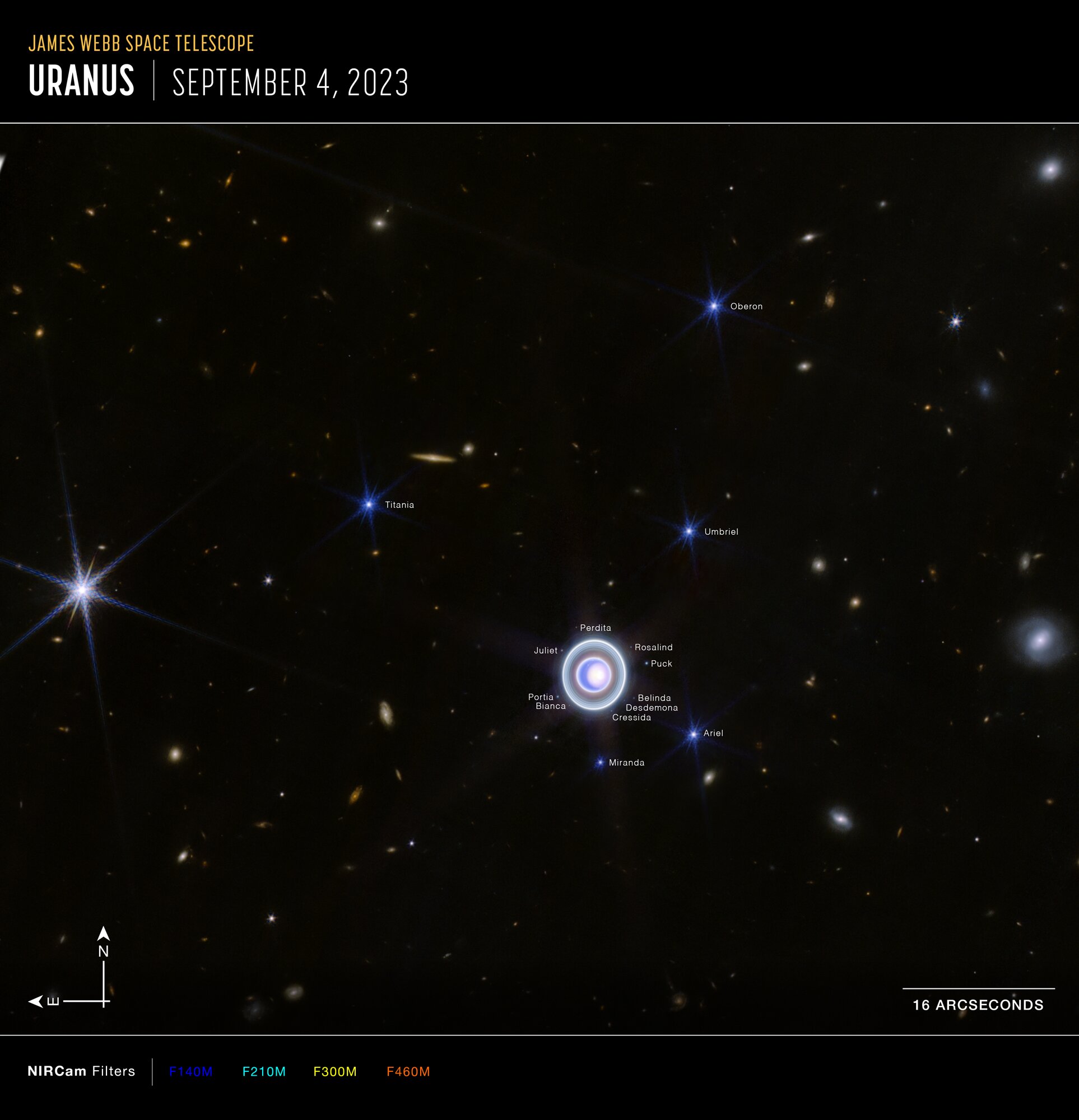
For 60 years, NASA’s Deep Space Network (DSN) has been the means by which the agency has maintained contact with every mission it has sent beyond Earth’s orbit. As missions have become more and more sophisticated, so has the amount of data flowing to and from the DSN’s three major ground stations – one in California, one in Spain, and one in Australia, and so positioned so that between them they provide a full 360O coverage of space around Earth – has increased.
While the DSN does work in cooperation with similar facilities operated by other nations – notably the Japanese Deep Space Network and EASTRACK , the European Space Agency’s network – NASA has been facing practical limits on how much data the DSN can send and receive – even allowing for past moves to higher bandwidth radio transmissions to increase data flow volumes – without increasing the number, size and power of the radio dishes the network has at its disposal; something which would be a long and costly process to put in place.
So instead, the agency is now moving to laser-based optical communications. some of these have been trialled with communications between Earth and orbiting satellites and the International Space Station, but a new system currently in development called DSOC (“dee-sock”), for Deep Space Optical Communications, now promises to revolutionise NASA’s deep space communications.
I first mentioned DSOC back in October 2023 when covering the launch of the Psyche mission to send a robotic vehicle to study the asteroid 16 Psyche (see: Space Sunday: Psyche and an eclipse). As I noted in that piece, the mission spacecraft – also called Psyche, carries a proof-of-concept DSOC system for communicating with Earth, and that system would be tested during – and possibly well beyond – the first twelve month’s of the vehicle’s outward flight from Earth.
Optical communications are of extreme importance for deep space missions for a number of reasons. First and foremost, that allow for the use of much greater bandwidths, allowing a greater volume of data to be transmitted in the same time as used for conventional radio transmissions. Secondly, the tight focus of optical transmissions removes a lot of the signal attenuation experienced by radio frequency transmissions, whilst also increasing overall signal strength and security. Finally, optical systems don’t require large receiving dishes, etc., and so can be far more compact and lighter than radio systems, allowing spacecraft mass to be reduced.

Testing of the Pysche mission’s DSOC proof-of-concept system recently started, and on December 22nd, 2023, it achieved a significant milestone by transmitting a pre-recorded 15-second high-definition video from the spacecraft to the Hale Telescope operated by the Palomar Observatory. On receipt, Palomar transmitted the video to to NASA’s Jet Propulsion Laboratory, Pasadena, where it was played in real time on the Internet. Transmitted across a distance of 31 million kilometres, the video was sent at a rate of 267 Mbps and took 101 seconds to reach Earth in its entirety.
And of course, being a video destined to be seen on the Internet, its subject was that of a cat; specifically a tabby called Taters, who was being entertained with a laser pointer toy.
Despite the light-hearted nature of the test, it underscores the potential for DSOC capabilities in future space missions. It shows that not only does the laser-based system transmit and receive far more data than can be achieved through conventional radio link in the same time period, it has the potential to bring “real time” (allowing for the inevitable lag on transmission times) video to things like rover missions on Mars, allowing mission planners and vehicle drivers to see terrain, etc., with greater continuity and clarity and faster than can be achieved through the recording, transmission, receipt and stitching together of multiple still images.
When it comes to human missions into deep space, capabilities like DSOC could become invaluable in helping crews on Mars (for example) maintain a sense of grater connection to family and friends on Earth simply because of the ability to see and record personal messages in high-definition video. To both these ends, the DSOC tests using the Psyche spacecraft could be extended all the way out to its rendezvous with Mars, allowing engineers to gather precise data on the capabilities and options for enhancing optical communications systems for use with robotic and crewed missions.
JWST Reveals a Dynamic Uranus
Learning aside the prepubescent titters mention of its name tends to give rise two in some quarters, Uranus is one of the most enigmatic planets within our solar system. A gas giant, Uranus is smaller than Saturn, but slightly larger than Neptune. It has mean diameter four times that of Earth, with a mass some 14.5 time greater than that of Earth.
Orbiting the Sun at an average distance of 20AU – 20 times that of the Earth’s average distance from the Sun – Uranus takes 84 terrestrial years to complete a single circuit around our star. To put this in context, it has not even completed three orbits since William Herschel first observed it in 1781 and was able to determine it to be a planet (or possibly – as he originally thought – a comet) rather than dismissing it as just another star, as those before him all the way back as far as Hipparchus had done.

But what makes Uranus curious is the fact that it is the only major planet (that is, excluding Pluto and the other dwarf planets) to have an extreme axial tilt – some 82.23º. The exact cause for this isn’t known for certain, but the most common theory is that very early in its history, Uranus was dealt a blow from a body of rock larger than Earth, knocking it over whilst causing the impacting body to break apart.
The upshot of this is a very – by our standards at least – unusual set of circumstances for the planet. These include the fact that in each 84-Earth-year orbit around the Sun, each of Uranus’ poles receives around 42 years of continuous sunlight, followed by 42 years of continuous darkness, and it is during the dozen(ish) terrestrial years of the equinoxes, when the Sun is facing the equator of Uranus, that the planet’s mid-latitudes experience a period of day–night cycles similar to those seen on most of the other planets. However, despite this – and because of a still-to-be-understand mechanism, the planet’s equatorial regions experience higher temperatures than are seen at its poles.
This mystery is deepened by the fact that Uranus is markedly colder than the other gas giants, but it has a low thermal flux, radiating little to no excess heat. Again, why this should by is unknown. One theory is that that force of the impact – if it was an impact – which tipped the planet over may have cause Uranus’ core to shed all of its primordial heat; another theory is that there may by one or more compositionally different layers within the planet’s mantle which cause convection flows which carry heat so far up towards the outer mantel and its boundary with the atmosphere before pushing the heat back down towards the core before it can be properly expelled.

Uranus, with its ring system and 27 known moons, all tilted in the same manner as the planet, has only ever been visited once by a vehicle from Earth, and that was Voyager 2, which came to within 81,500 km of the upper reaches of the planet’s atmosphere on January 24th, 1986 as it swung by the planet en-route to Neptune. At that time, Uranus appeared surprising bland and uninteresting, despite the fact is rotates around its axis once every 17 hours; in fact, the spacecraft only noted 10 features visible in the planet’s atmosphere as it passed, a marked contrast with the likes of Neptune, Saturn and Jupiter.
Since then, Uranus has been observed by the Hubble Space Telescope (HST), which allowed astronomers their first close-up glimpse of the planet’s north polar latitudes. HST’s imaging, largely in the visible and ultra-violet wavelengths did help to reveal a more dynamic thrust to Uranus’ atmospheric mechanisms, whilst further observations in the infra-red suggested that Uranus is every bit as dynamic as its gas giant siblings.
These latter findings have now been added to by the James Webb Space Telescope (JWST), which earlier in 2023 was commanded to turn its huge eye towards Uranus and have a good look. In doing so, JWST was able to image the planet’s slender series of rings – so dark they are hard to discern in the visible spectrum when images by telescopes – and several of the tiny moons which orbit Uranus and help shepherd those rings.

In particular, Webb was able to capture the elusive Zeta Ring, the closest to the planet and so diffuse it has proven hard to image with any clarity. In addition, JWST caught multiple atmospheric formations, including the planet’s “polar cap”.
This cap – a collection of high-altitude weather formations rather than any ice cap of the type with which we’re familiar – tends to form during the solstices, when one or other the Uranus’ poles is pointing more-or-less directly towards the Sun – in this case, the summer solstice, which reaches its peak in 2028. Observing the development of this cap, as JWST has and will continue to do over the next few years, may help unlock some of the mysteries surrounding the dynamics of the planet’s atmosphere and weather. Beyond the bright disc of the polar region, JWST also imaged cloud formations suggesting both developing and on-going storms, the understanding of which might inform astronomers as to the planet’s heat flow mechanisms.

Gaining a clearer view of the planet’s ring system is important for those who want to send a mission to study the planet and its moons at some point in the future. Interest in doing this is actually fairly high in some quarters, with no fewer than five orbital missions being proposed in just the last 15 years alone. However, having a clearer understanding of the composition and disposition of the Urainian ring system, particularly the inner rings like the Zeta Ring, is seen as vital to the success of any orbital mission.
Thus, Webb’s unparalleled infrared resolution and sensitivity is allowing astronomers to see Uranus its system with unparalleled clarity, helping them to better understand the planet, the challenges any future missions their might face and – perhaps most intriguingly of all – helping them understand how exoplanets which show similarities with Uranus and Neptune may have formed and how they work.